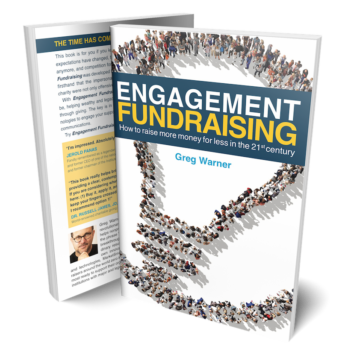We use cookies to ensure that we give you the best experience on our website. By continuing to use this site, you agree to our use of cookies in accordance with our Privacy Policy.
 Login
Login
Your Role
Challenges You Face
results
Learn
Resources
Company
Here’s How To Really “Qualify” Your Top Prospects


Ask your CEO to commit to six 90-minute no-holds-barred dialogic sessions, real or virtual or some combination thereof, limited to 15 participants each, in which she or he takes no more than 30 minutes to lay out:
- The organization’s strategic emphases
- The rationale for selecting those emphases
- What has been de-emphasized, if not eliminated, to ensure strategic focus
- Where strategic emphases are producing results
- How greater results could be produced
- What it will take to produce those results, including but not limited to more money
Then invite your top 90 prospects (6 x 15) to participate in any one of these intimate, frank discussions scheduled in the next six months. Be explicit, “We are limiting participation in each session to 15 to ensure that we will benefit from the expertise of everyone in attendance.” If any of the prospects are interested in attending but can’t make any in person, offer a virtual attendance option.
If all 90 come, congratulations, your criteria for selecting them was sound.
Those who decline all sessions should not be considered top prospects. Why would you put them in someone’s portfolio if they have no interest in a deep dialogic dive into your mission?
Participants should be put in portfolios – and you will have learned so much more about them based on what they shared in their session. Now you have a rationale for a philanthropic facilitator to follow up and see how to build on what they shared. That is why you must make sure every attendee is given a chance to talk (if 15 attend, that means each has 4 minutes to speak).
This is a far better way to “qualify” prospects. Sending a philanthropic facilitator out to make the first contact is inefficient and sends the wrong signal (i.e., this is about money not building a cause-driven, results-oriented community).
If your CEO isn’t willing to do this, how are you going to make your top prospects feel like valued insiders? How are your facilitators supposed to make up for the absence of that? By being charming? You have much bigger problems than trying to figure out how to make your facilitators more productive. What are they actually facilitating if not strategic engagement? Remember now, I’m talking about your TOP prospects, those that you hope will constitute at least half of your total support.
If you can’t figure out how to scale this to your organization (e.g. how many sessions, how many prospects per session, how much real, how much virtual) and take everything I just said absolutely literally – it must be six sessions with 15 each in each session, etc. – you shouldn’t be running an advancement operation.
On the other hand, the more of this your CEO is willing to do, and the better they get at it, which they should if they learn from each session, the greater your chances of building a stronger cause-driven community and securing the resources you need to produce ever greater results.
Jim Langley is the president of Langley Innovations. Langley Innovations provides a range of services to its clients to help them understand the cultural underpinnings of philanthropy and the psychology of donors and, with that knowledge, to develop the most effective strategies and tactics to build broader and more lasting communities of support. Jim has authored numerous books including his most recent book, The Future of Fundraising: Adapting to New Philanthropic Realities, published by Academic Impressions in 2020.
Related Resources:
-
- Webinar: 4-Step Process for “Reimagining Fundraising Operations”
- The Power of Building Relationships: Why Donors Need Good Fundraisers
- A Positive Trend In Fundraising That’s Applicable to All We Do
- Why AI and Machine Learning Fail to Help Fundraisers Build ‘QUALIFIED’ Major Donor Portfolios (or Caseloads)
- The Secret to Raise Money More Cost-Effectively: Stop Fundraising
Get smarter with the SmartIdeas blog
Subscribe to our blog today and get actionable fundraising ideas delivered straight to your inbox!
